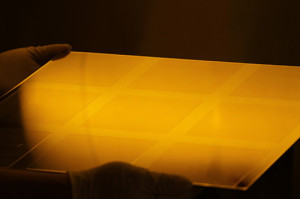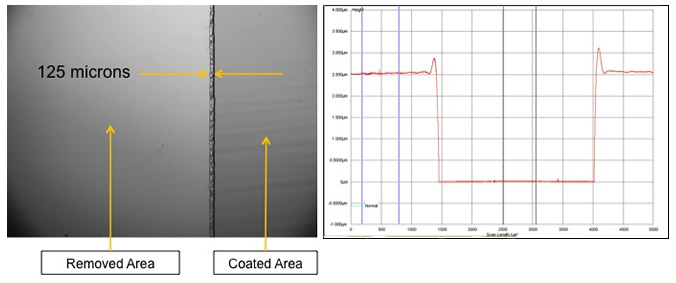Selective Area Coating (“Patch Coating”) & Macro Patterning

The slot die coating (extrusion coating) process is typically employed to deposit the process material over essentially the entire substrate, with the exception of a small uncoated area (typically anywhere from 2-10mm wide) that is left around the perimeter of the substrate. For many customers, this full area coating meets their process objectives.
However, for certain applications, it is desirable to have certain areas coated with the process material, while other areas are free of this material. Traditionally, this type of coating is achieved in the industry by some type of patterned removal process, which uses a number of additional process steps and materials to achieve the resulting pattern (at considerable cost).
Selective Area Coating / Patch Coating
The ability to coat an array of rectangular shapes on a substrate (see image above), is now possible through nTact Slot Die Coating, which is quickly becoming the industry standard. nTact’s industry leading slot die coating systems can be designed for Patch Coating from Research and Development to Full Production applications.
Macro Patterning
For micro patterning, such as the formation of microscopic features and circuits, the traditional methods of photolithography still dominate the industry, despite their intrinsic cost.
nTact developed technology which offers a less precise and significantly lower cost method of patterning (“macro patterning”) of the coated areas, as an alternative to expensive photolithography or laser ablation methods. This alternate removal process offers users the ability to pattern complex shapes in the millimeter size range via a patented solvent jet spray removal process.

